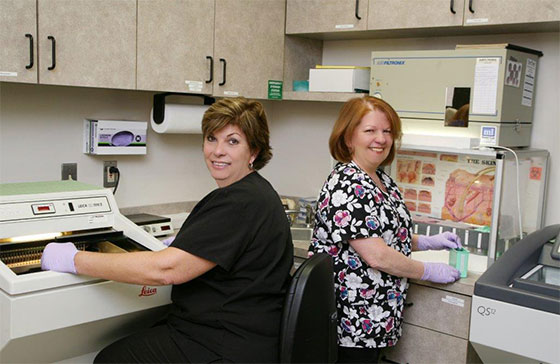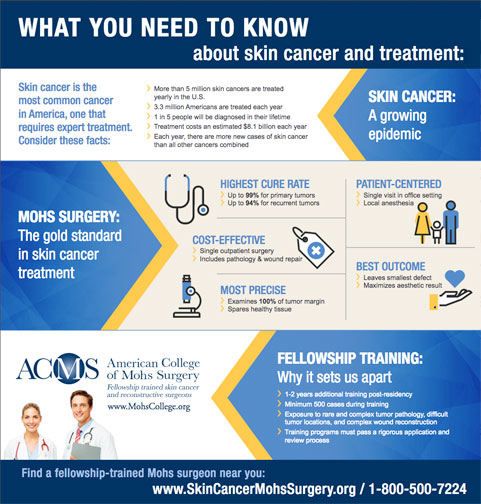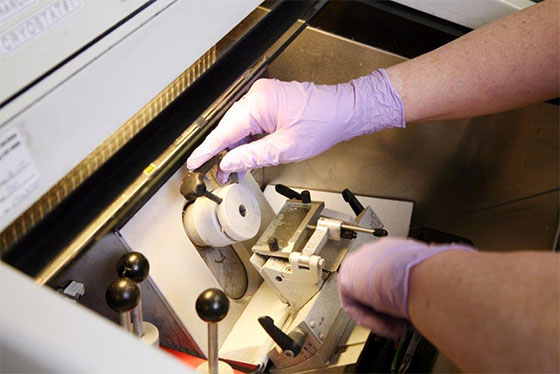MOHS
It is our hope that this section will answer many of your questions and give you a better understanding of Mohs Micrographic Surgery and the other procedures performed in our New Jersey office. Mohs surgery is a name applied to a technique developed by Dr. Frederick Mohs in 1936 for the removal of difficult and recurrent skin cancers. It is a method done under local anesthetic, in the office in which excision of a tumor is performed using microscopic control to determine the extent of the cancer. This microscopic control enables Dr. Connolly to trace the cancer to its roots and at the same time sacrifice the least amount of normal, healthy tissue. For this reason, skin cancers in difficult locations such as the ears , eyelids, fingers, nose or lips as well as lesions recurring in scars after previous unsuccessful therapy are best treated this way. Indeed almost all skin cancers of the head and neck area as well as many on other parts of the body can benefit from this highly accurate yet tissue-sparing procedure.
The number of patients who have been cured clearly demonstrates that Mohs surgery is the most successful of all methods for the treatment of skin cancer. Utilizing the Mohs technique, the cure rate for basal cell carcinoma is usually 97-99% even if other forms of treatment have failed. Mohs surgery requires highly specialized training and technology; therefore few medical centers and private offices in the United States are equipped to offer this highly advanced therapy. We have four operating suites and a frozen section laboratory managed by a licensed histology technician in our office which is located across the street from St. Barnabas Medical Center.
When the Mohs procedure is finished, there will be a wound created. Due to the conservative nature of the Mohs technique, many of these are small enough that they heal beautifully without any plastic surgical repair. If the wound does need reconstruction, this can often be done by Dr. Connolly in the office the same or next day. If the wound requires a plastic surgeon to repair it, our office has long, established relationships with some of the finest plastic surgeons in the state. Such repairs can often be set up in advance when the lesions are in cosmetically important areas.
Since there is much time spent waiting while your tissue is being analyzed, it is advisable to bring somebody with you to keep you company and drive you home if you don’t feel up to it.




